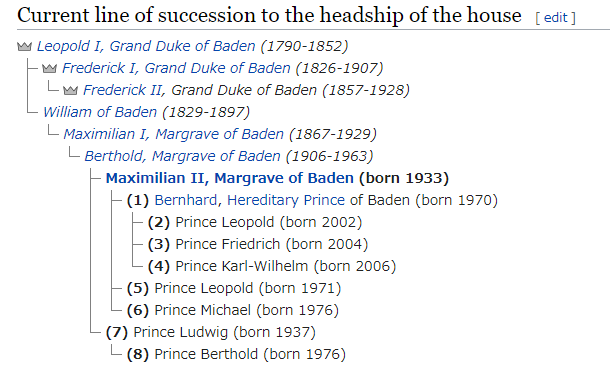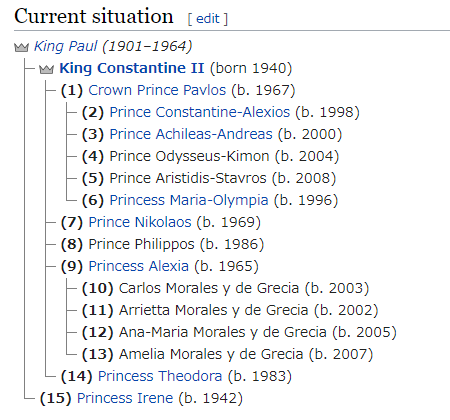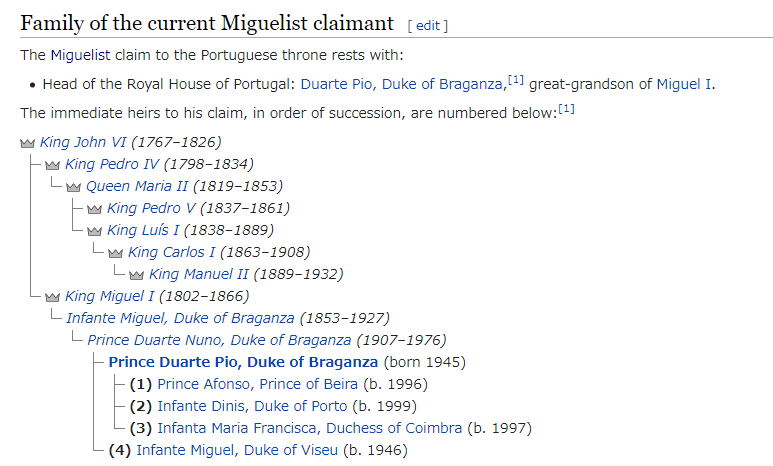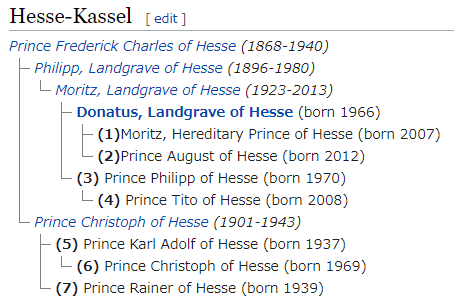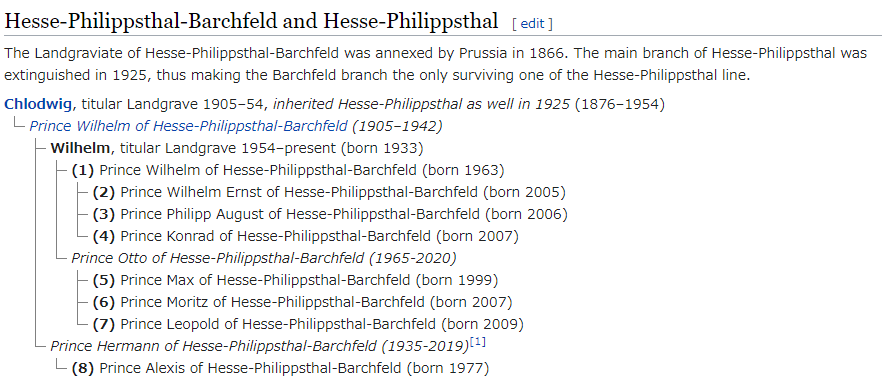In Wikipedia, this article’s name is(was) Line of succession to the former throne of Baden.
note:
As of July 2020.
The monarchy in Baden came to an end in 1918 along with the rest of the monarchies that made up the German Empire. The last sovereign was Grand Duke Frederick II who abdicated at Karlsruhe, 14–22 November 1918.[1] The current head of the Grand Ducal House is Maximilian, Margrave of Baden and Duke of Zähringen.
History
Near extinction
In the early 19th century the grand ducal house was on the verge of extinction. By 1817 the only male members of the family were the reigning Grand Duke Charles and his unmarried uncle Prince Louis. In the event that the male line died out the throne would pass to King Maximilian I Joseph of Bavaria. The only alternative to this was for the grand duke to recognise his morganatic uncles Leopold, William and Maximilian, the Counts von Hochberg as dynastic members of the grand ducal family. On 4 October 1817 Grand Duke Charles took this step issuing a new house law recognising his uncles as Princes of Baden. The Hochberg’s right of succession was recognised by the Great Powers on 10 July 1819.[2] The former Count Leopold von Hochberg succeeded as Grand Duke in 1830 and his descendants went on to rule Baden until 1918. By the early 20th century the succession was once again insecure with the future of the dynasty resting on Prince Berthold of Baden.[3]
Kasper Hauser
Main article: Kasper Hauser
According to contemporary rumours – probably current as early as 1829 – Kaspar Hauser was the son of Grand Duke Charles who was born on 29 September 1812, and who, according to known history, had died on 16 October 1812. It was alleged that this prince had been switched with a dying baby, and had subsequently surfaced 16 years later as Kaspar Hauser in Nuremberg. These theories linking him with the princely House of Baden have long since been rejected by professional historians.
Succession law
The succession law is Semi-Salic, with the succession hereditary among the male members. However, in the event of the extinction of the male line the succession could be transmitted to princesses and their descendants.[2]
Line of succession in 1918
- Leopold I, Grand Duke of Baden (1790-1852)
- Frederick I, Grand Duke of Baden (1826-1907)
- Frederick II, Grand Duke of Baden (born 1857)
- William of Baden (1829-1897)
- (1) Prince Max of Baden (born 1867)
- (2) Prince Berthold of Baden (born 1906)
- (1) Prince Max of Baden (born 1867)
- Frederick I, Grand Duke of Baden (1826-1907)
Current line of succession to the headship of the house
- Leopold I, Grand Duke of Baden (1790-1852)
- Frederick I, Grand Duke of Baden (1826-1907)
- Frederick II, Grand Duke of Baden (1857-1928)
- William of Baden (1829-1897)
- Maximilian I, Margrave of Baden (1867-1929)
- Berthold, Margrave of Baden (1906-1963)
- Maximilian II, Margrave of Baden (born 1933)
- (1) Bernhard, Hereditary Prince of Baden (born 1970)
- (2) Prince Leopold (born 2002)
- (3) Prince Friedrich (born 2004)
- (4) Prince Karl-Wilhelm (born 2006)
- (5) Prince Leopold (born 1971)
- (6) Prince Michael (born 1976)
- (1) Bernhard, Hereditary Prince of Baden (born 1970)
- (7) Prince Ludwig (born 1937)
- (8) Prince Berthold (born 1976)
- Maximilian II, Margrave of Baden (born 1933)
- Berthold, Margrave of Baden (1906-1963)
- Maximilian I, Margrave of Baden (1867-1929)
- Frederick I, Grand Duke of Baden (1826-1907)
